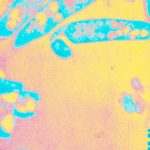Link to Pubmed [PMID] – 19486312
Transbound Emerg Dis 2009 Aug;56(6-7):255-68
Mycobacteria are characterized by a complex cell wall, the lipid nature of which confers to the bacilli resistance to drying, acid or alkaline conditions, and to chemical disinfectants and therapeutic agents. Pathogenic species, such as Mycobacterium tuberculosis, M. leprae and M. ulcerans, have evolved various strategies to establish residence in their hosts and provoke long-term infections. There is mounting evidence that the unique lipids composing their envelopes, strategically located at the host-pathogen interface, contribute to their escape from immune surveillance. Here, the chemical structure, host cell receptors and biological actions of this emerging class of mycobacterial virulence factors are reviewed.
